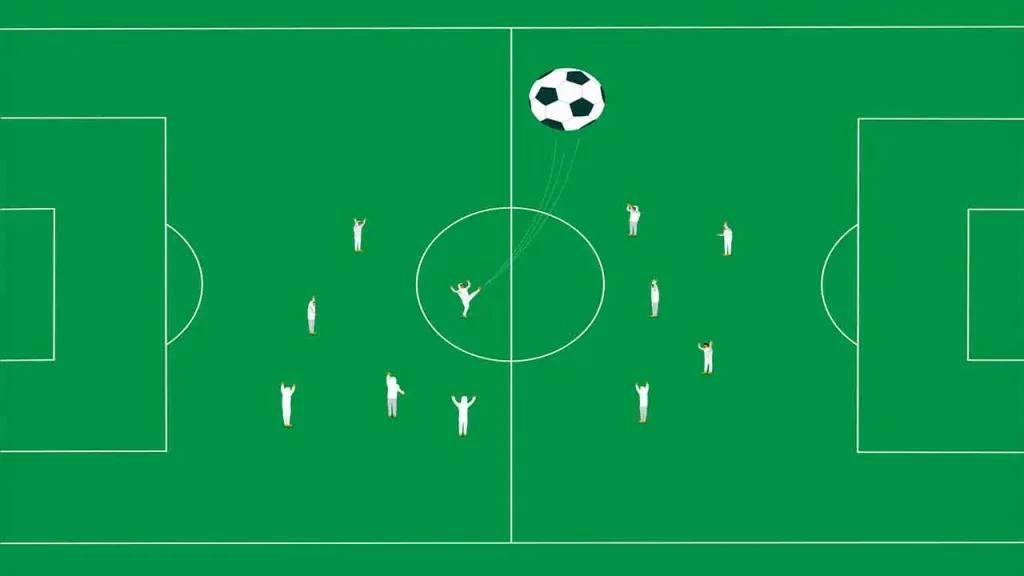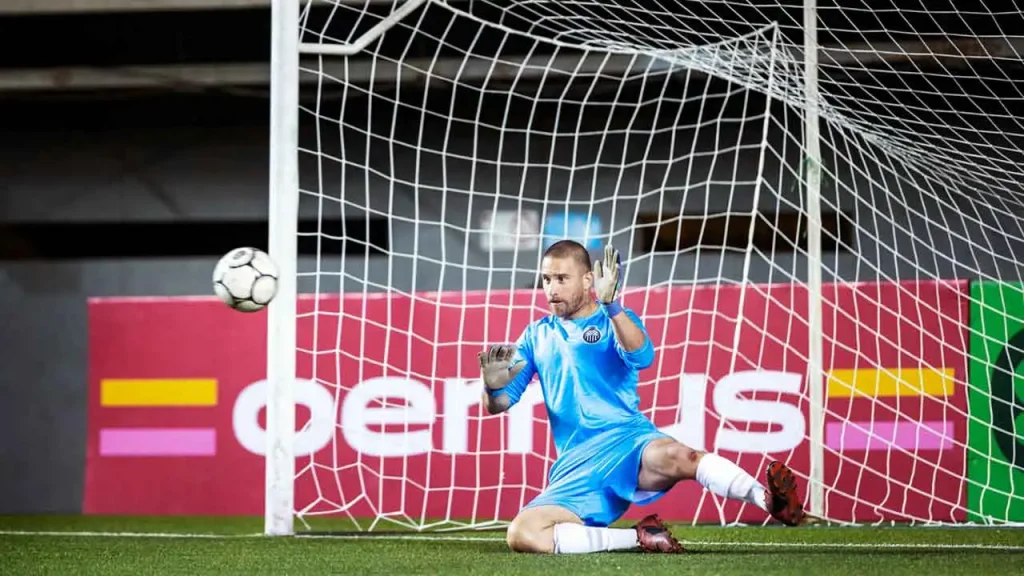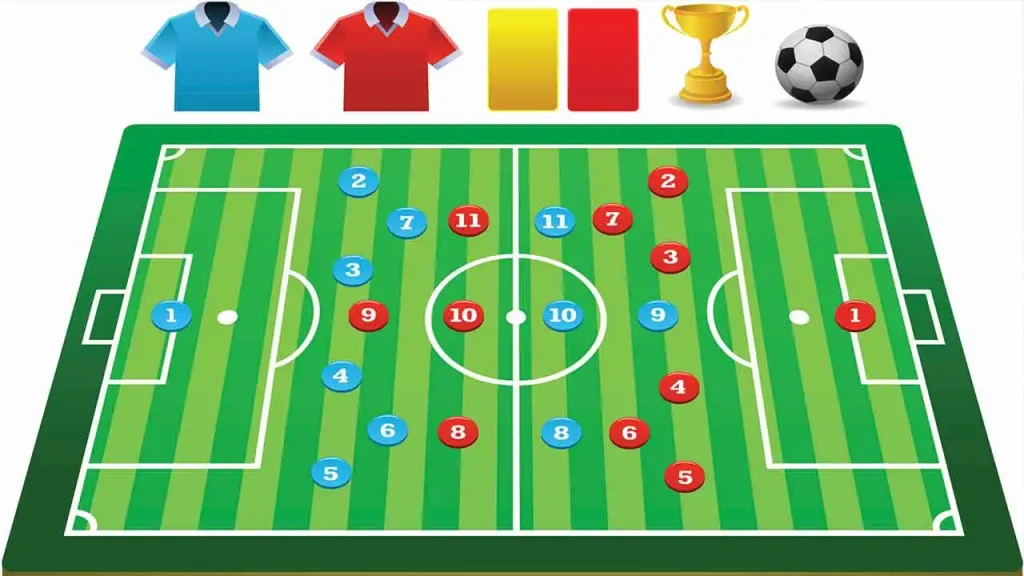Soccer Defense Positions: Roles and Responsibilities

Soccer Defense Positions – Everything You Need to Know
When it comes to soccer, defense plays a crucial role in determining the outcome of a match. The defenders are the unsung heroes who tirelessly guard their territory and protect their team’s goal from being breached. But do you know what exactly goes into these soccer defense positions? How many positions are there, and what are their roles and responsibilities on the field?
In this comprehensive guide, we will delve deep into the world of soccer defense positions. From understanding where each defender is positioned on the field to unraveling their distinct roles, we’ve got you covered! So get ready to discover everything you need to know about defending in soccer – let’s kick-off!
Positions of the Defenders on a Soccer Field
In soccer, defenders have specific positions on the field that they occupy during a game. These positions are strategically chosen to maximize defensive coverage and protect the team’s goal. The most common positions for defenders include center back, sweeper, wing back, and full back.

Each defender position requires specific skills such as excellent tackling abilities, aerial prowess, speed, agility, and good positional awareness. By playing their respective roles effectively, defenders contribute significantly towards maintaining a solid defensive line throughout matches.
Stay tuned as we delve deeper into each defensive position’s responsibilities and explore popular formations used by teams worldwide!
How Many Soccer Defense Positions in Soccer
How many soccer defense positions are there in soccer? The answer may vary depending on the specific formation and tactics employed by a team, but generally speaking, there are 5 main defensive positions: goalkeeper, center back, sweeper, wing back, and full back. Each position has its unique role and responsibilities in the field.
01 – Goalkeeper
The goalkeeper is a vital position in soccer defense, responsible for protecting the goal at all costs. Positioned between the goalposts, their main objective is to prevent the opposing team from scoring.
A skilled goalkeeper possesses excellent reflexes, agility, and decision-making abilities. They must be able to anticipate and react quickly to shots on goal, diving, or leaping to make crucial saves. Additionally, they need strong communication skills to coordinate with their defenders and organize the defensive line.

Goalkeepers also play an important role in distributing the ball from the backline. Their accurate long throws or kicks can initiate counterattacks and help transition from defending to attacking swiftly.
In terms of positioning during gameplay, a goalkeeper must possess good spatial awareness. They need to stay alert throughout the match and constantly adjust their position based on the movements of both attackers and defenders. A reliable goalkeeper can be a game-changer for any team by making critical saves that keep them in contention for victory!
02 – Center Back
The center back is a crucial position in soccer defense. They are typically positioned in the middle of the defensive line, right in front of the goalkeeper. Center backs play a vital role in organizing and coordinating the defense, as well as preventing opposing players from scoring.
One of the primary responsibilities of a center-back is to mark opposing forwards and prevent them from getting close to the goal. They need to be physically strong and have excellent positioning skills to effectively challenge headers and win duels against attacking players.
Center backs also need to possess good communication skills, as they are responsible for directing their teammates on defensive strategies and marking assignments during set pieces or when facing dangerous attacks.
In addition to their defensive duties, center backs often initiate plays by making accurate long passes or distributing the ball out wide to start offensive maneuvers. This requires them to have good vision and passing abilities.
Center backs play a significant role in maintaining defensive stability while contributing to both offensive build-up play and team coordination. Their physicality, tactical awareness, communication skills, and ability on the ball make them an essential component of any successful soccer defense.
03 – Sweeper
Soccer defense positions are crucial for maintaining a solid defensive line and protecting the goal. One such position is the sweeper, who plays a key role in organizing the defense and providing support to their teammates.
The sweeper, also known as the libero or stopper, typically operates just behind the center backs. Their primary responsibility is to sweep up any loose balls that get past the other defenders. They act as a last line of defense, preventing opposing players from getting through on goal.
In addition to their defensive duties, sweepers often have excellent vision and passing ability. This allows them to distribute the ball effectively and initiate attacking moves from deep within their half. They play an important role in transitioning from defense to offense.
Furthermore, sweepers need to be adept at reading the game and anticipating potential threats. Their positional awareness enables them to cover spaces left by other defenders or track runs made by opposition attackers.
Sweepers bring stability and intelligence to a team’s defense. With their ability to read the game well, provide cover for other defenders, and initiate attacks with accurate distribution of passes, they are vital components of successful soccer teams worldwide.
04 – Wing Back
Wing-backs play a crucial role in the defense of a soccer team. Positioned on the outer edges of the defensive line, they have to be quick and agile to cover their assigned area effectively.
The main responsibility of a wing-back is to defend against opposing wingers or wide attackers. They need to stay alert and prevent any crosses or passes from reaching dangerous areas near their goal. At the same time, they must also be ready to make overlapping runs and provide support in attacking situations.
In terms of positioning, wing-backs are usually found slightly higher up the pitch compared to full-backs. This allows them to create width in attack and stretch the opposing defense. However, it also means that they have additional defensive duties when their team loses possession.
Wing-backs require excellent stamina as they often have to cover large distances throughout the game. Their ability to quickly transition between defense and attack is essential for maintaining balance on both ends of the field.
Wing-backs are versatile players who contribute significantly in both the defensive and offensive aspects of the game. Their ability to defend tightly while providing an extra attacking outlet makes them valuable assets for any soccer team.
05 – Full Back
Fullbacks are an essential part of any soccer defense, providing both defensive solidity and attacking support. Positioned on the outer edges of the defensive line, fullbacks have a crucial role in shutting down opposing wingers and preventing crosses into the box.
Defensive Responsibilities: When it comes to defending, fullbacks must be adept at marking their opponents tightly and anticipating their moves. They need to stay goal-side, making it difficult for attackers to get past them. Fullbacks also play a key role in intercepting passes and clearing the ball away from danger.
Attacking Contributions: In addition to their defensive duties, fullbacks are expected to contribute offensively as well. They provide width by overlapping with midfielders or wingers, creating additional options for ball distribution. Their crossing ability is vital in delivering accurate balls into the penalty area for strikers to capitalize on.
Versatility and Stamina: Fullbacks often cover large distances during matches, requiring excellent stamina and fitness levels. They need speed to keep up with fast-paced wingers while maintaining positional awareness.
Impact: The impact of full-backs can’t be underestimated, they play a significant role in both defense and attack. Their versatility makes them valuable assets to any team’s tactical setup.
Fullbacks bring balance and stability to soccer defenses while actively contributing offensively through overlaps and precise crosses. Their versatile skill set allows them to make a significant impact on games by shutting down opponents while creating scoring opportunities for their team.
Defensive Formation in Soccer
Defensive formations in soccer play a crucial role in determining how a team organizes its defense on the field. These formations dictate the positioning and roles of the defenders, allowing them to effectively protect their goal from the opposing team’s attacks.
These are just some examples of defensive formations commonly used in soccer today but there are many other variations depending on specific tactical approaches adopted by coaches according to the strengths and weaknesses of their teams. The choice of formation ultimately depends on
5 Defenders, 4 Midfielders, 1 Forward, FORMATION
The 5-4-1 formation is a defensive-minded strategy that focuses on maintaining a solid backline and limiting the opponent’s scoring opportunities. In this formation, there are 5 defenders, 4 midfielders, and 1 lone striker upfront.
The primary objective of the defenders in the 5-4-1 formation is to provide excellent support to the goalkeeper and prevent any breakthroughs from the opposing team. The 3 center-backs play a crucial role in organizing the defense and marking opposing forwards tightly. They need to be strong, agile and have good communication skills to coordinate with their teammates effectively.

The wing-backs in this formation have dual responsibilities – defending against opponents on their side of the field while also providing attacking support when possible. They must possess exceptional stamina and speed as they cover significant ground during both offensive and defensive phases.
In midfield, each player has an important role to play. The central midfielders work tirelessly to break down opposition attacks by intercepting passes or making well-timed tackles. Meanwhile, the wide midfielders contribute defensively by tracking back but also offer width going forward when counterattacking.
Upfront lies the solitary striker whose main task is often holding up play until reinforcements arrive or pressuring opposing defenders into mistakes when out of possession.
The 5-4-1 formation requires disciplined defending from all players involved while relying on quick transitions from defense to attack for scoring opportunities. This setup can frustrate opponents who struggle to break through a compact defense but demand high levels of fitness and concentration from every player throughout the match.
4 Defenders, 5 Midfielders, 1 Forward FORMATION
The 4-5-1 formation is a defensive-minded setup that focuses on maintaining a solid shape and limiting the opposition’s attacking opportunities. In this formation, there are 4 defenders at the back, with 2 center-backs flanked by 2 fullbacks. The midfield consists of 5 players, with 3 central midfielders and 2 wide midfielders who also provide defensive cover.
This formation aims to control the game in the middle of the park by flooding the midfield and crowding out opponents. The central midfield trio works together to disrupt the opposing team’s passing lanes and win back possession. They act as both playmakers and ball-winners, providing support to both defense and attack.
The wide midfielders have dual responsibilities – they contribute defensively by tracking back to help their fullbacks while also offering width in attacking situations. Their ability to switch roles between offense and defense adds versatility to this formation.
Upfront, there is a lone striker who acts as a target man for long balls or holds up play to involve teammates in quick counterattacks or build-up play from deep positions.
The 4-5-1 formation is an effective system for teams looking to prioritize defensive solidity while still having options for breaking forward swiftly on transitions or set pieces. It requires discipline from all players involved but can be highly successful when executed properly against stronger opponents.
5 Defenders, 3 Midfielders, 2 Forwards FORMATION
The 5-3-2 formation is a defensive-minded strategy that focuses on solidifying the backline. With 5 defenders, 3 midfielders, and 2 forwards, this formation provides excellent coverage in defense while allowing for quick counterattacks.
In this setup, the 3 central defenders play a crucial role in protecting the goal. They must be strong in aerial duels and have good positioning to prevent opposition attacks. The wing-backs provide width to the team’s play by pushing forward when attacking and dropping back to support the defense when needed.

The 3 midfielders act as a shield for the defense, controlling possession and breaking up opposition plays. Their responsibilities include intercepting passes, distributing the ball efficiently, and providing support to both defense and attack.
With only 2 forwards upfront, they need to have excellent communication and understanding of each other’s movements. These strikers should be able to hold up play, bring others into the game with their passing ability, or create scoring opportunities themselves.
The 5-3-2 formation offers stability at the back while still maintaining an offensive threat through swift transitions from defense to attack. It requires disciplined defending from all players on the field but can prove highly effective against stronger opponents or when protecting leads.
4 Defenders, 3 Midfielders, 3 Forwards FORMATION
The 4-3-3 formation is a popular defensive strategy in soccer that focuses on maintaining a balanced structure while pushing for attacking opportunities. This formation consists of 4 defenders, 3 midfielders, and 3 forwards.
In this formation, the 4 defenders usually consist of 2 center-backs and 2 full-backs. The center-backs are responsible for providing stability at the back and making crucial tackles to prevent opposing attacks. They also play a vital role in distributing the ball to initiate offensive plays.
The midfield trio in the 4-3-3 formation plays a pivotal role in controlling the game’s tempo. One midfielder typically acts as a holding player, shielding the defense and intercepting passes from opponents. The other 2 midfielders focus on creating scoring opportunities by linking up with both attackers and defenders.
Upfront, 3 forwards work collectively to put pressure on opponents’ defenses. The central striker often serves as the main target for through balls or crosses into the box. Meanwhile, the wingers use their speed and dribbling skills to penetrate wide areas and deliver accurate crosses or take shots themselves.
The 4-3-3 formation offers versatility by allowing teams to transition quickly between defense and attack while maintaining positional discipline across all areas of the pitch. Remember that every team may have slight variations within this system depending on their tactical approach or individual player strengths!
4 Defenders, 4 Midfielders, 2 Forwards Formation: A Balanced Defensive Approach
The 4-4-2 formation is a classic defensive setup that provides a balanced approach on the soccer field. This formation consists of 4 defenders, 4 midfielders, and 2 forwards. Let’s take a closer look at the roles and responsibilities of each position in this formation.
In defense, the backline typically consists of 2 center backs and 2 fullbacks. The center backs play a crucial role in marking opposing forwards and intercepting passes while providing cover for their teammates. On the flanks, the fullbacks are responsible for both defensive duties and supporting attacks by overlapping with the wingers.

Moving into midfield, 2 central midfielders act as ball-winners, distributing play to their teammates or launching counterattacks when possible. They need to be strong defensively while also contributing offensively by providing support for both defense and attack.
On either side of the pitch, there are wide midfielders known as wingers or wide players. Their primary responsibility is to provide width to stretch opposing defenses. Wingers should have good crossing abilities to deliver accurate balls into dangerous areas.
Up front in this formation are 2 strikers who work together as partners. One striker often plays as a target man holding up play and winning aerial duels while creating space for their strike partner who specializes in goal-scoring opportunities inside the box.
The 4-4-2 formation offers solid defensive coverage through its flat backline structure while allowing flexibility in attacking options with dual strikers supported by capable wingers from wider positions.
Final Thoughts
Understanding the roles and responsibilities of soccer defense positions is crucial for any player, coach, or fan who wants to appreciate the game at a deeper level. Defenders play a vital role in protecting their team’s goal and preventing the opposition from scoring.
From the goalkeeper to the fullback, each defensive position brings its own unique set of skills and responsibilities. Whether it’s making crucial saves, marking opponents tightly, intercepting passes, or providing support in attack, defenders are essential for maintaining balance on the field.
Defensive formations also play a significant role in determining how defenders work together as a unit. Different formations such as 5-4-1, 4-5-1, 5-3-2, 4-3-3, and 4-4-2 offer various tactical advantages depending on the team’s strengths and style of play.
Soccer defense positions require discipline, communication skills, anticipation ability to read the game effectively. Defenders must be able to adapt quickly to different situations while maintaining focus throughout an entire match.
So whether you’re aspiring to be a defender yourself or simply want to enhance your understanding of soccer tactics and strategies – familiarizing yourself with these defensive positions will undoubtedly help you appreciate this beautiful sport even more!
Remember that defense wins championships! Without strong defenders anchoring their backline successfully repelling attacks time after time – teams would struggle both defensively and offensively. Next time you watch a match pay close attention to how defenders interact with one another as they strive tirelessly towards achieving victory!






